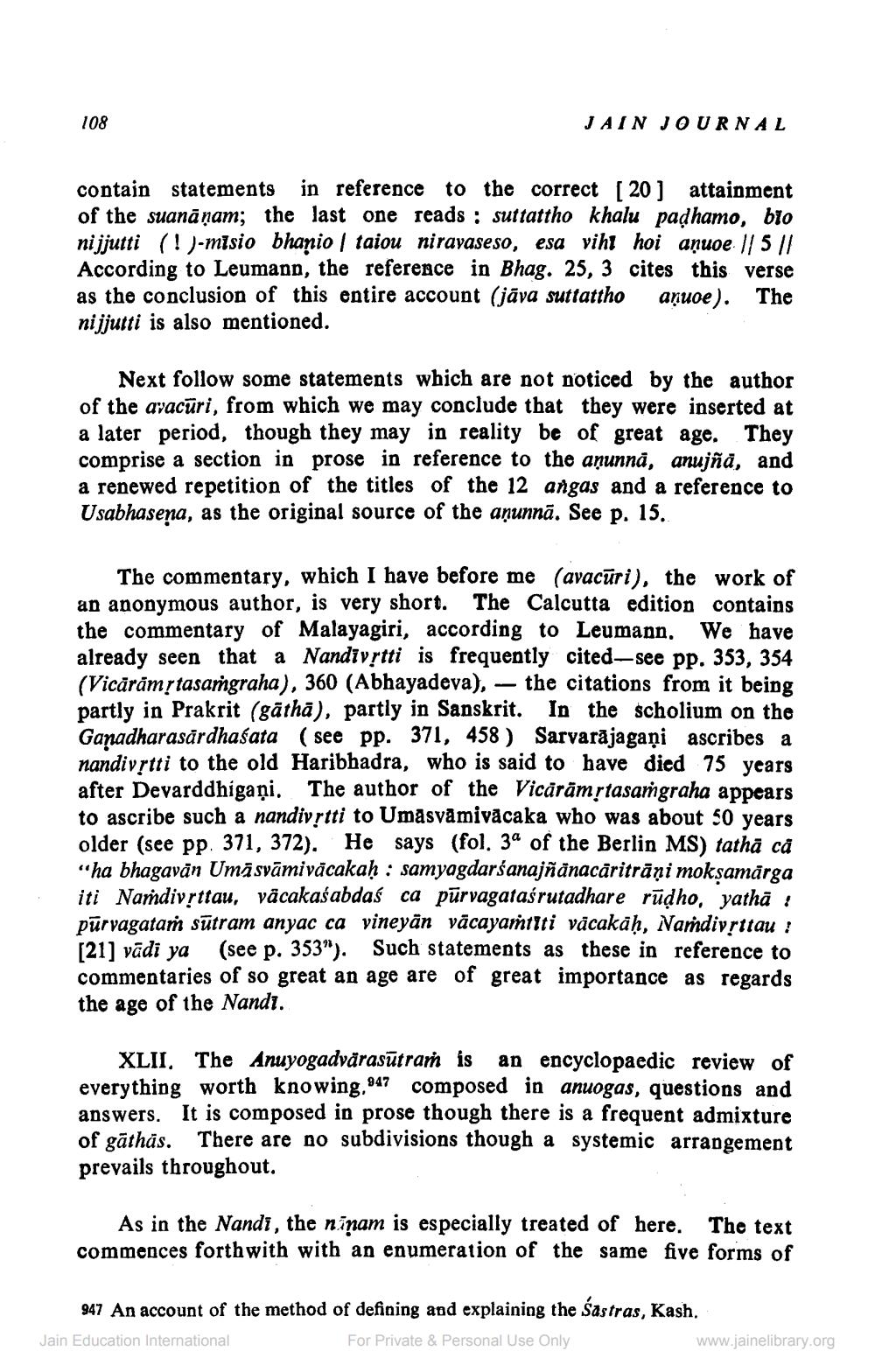Book Title: Jain Journal 1994 01 Author(s): Jain Bhawan Publication Publisher: Jain Bhawan Publication View full book textPage 8
________________ 108 JAIN JOURNAL contain statements in reference to the correct [20] attainment of the suanāṇam; the last one reads: suttattho khalu paḍhamo, blo nijjutti (!)-misio bhanio | taiou niravaseso, esa viht hoi anuoe || 5 || According to Leumann, the reference in Bhag. 25, 3 cites this verse as the conclusion of this entire account (jāva suttattho nijjutti is also mentioned. anuoe). The Next follow some statements which are not noticed by the author of the avacuri, from which we may conclude that they were inserted at a later period, though they may in reality be of great age. They comprise a section in prose in reference to the aṇunnā, anujñā, and a renewed repetition of the titles of the 12 angas and a reference to Usabhasena, as the original source of the aṇunna. See p. 15. The commentary, which I have before me (avacuri), the work of an anonymous author, is very short. The Calcutta edition contains the commentary of Malayagiri, according to Leumann. We have already seen that a Nandivṛtti is frequently cited-see pp. 353, 354 (Vicārāmṛtasaṁgraha), 360 (Abhayadeva), the citations from it being partly in Prakrit (gāthā), partly in Sanskrit. In the scholium on the Gaṇadharasardhasata (see pp. 371, 458) Sarvarajagaņi ascribes a nandivṛtti to the old Haribhadra, who is said to have died 75 years after Devarddhigani. The author of the Vicärāmṛtasaṁgraha appears to ascribe such a nandivṛtti to Umāsvāmivācaka who was about 50 years older (see pp. 371, 372). He says (fol. 3a of the Berlin MS) tathā că "ha bhagavan Umāsvāmivācakaḥ: samyagdarśanajñānacāritrāṇi mokṣamārga iti Namdivṛttau, vācakaśabdaś ca pūrvagataśrutadhare rūḍho, yathā! pūrvagatam sūtram anyac ca vineyān vācayaṁtīti vācakāḥ, Namdivṛttau! [21] vādi ya (see p. 353"). Such statements as these in reference to commentaries of so great an age are of great importance as regards the age of the Nandı. 947 XLII. The Anuyogadvārasūtram is an encyclopaedic review of everything worth knowing," composed in anuogas, questions and answers. It is composed in prose though there is a frequent admixture of gathās. There are no subdivisions though a systemic arrangement prevails throughout. As in the Nandi, the niņam is especially treated of here. The text commences forthwith with an enumeration of the same five forms of 947 An account of the method of defining and explaining the Sastras, Kash. Jain Education International For Private & Personal Use Only www.jainelibrary.orgPage Navigation
1 ... 6 7 8 9 10 11 12 13 14 15 16 17 18 19 20 21 22 23 24 25 26 27 28 29 30 31 32 33 34 35 36 37 38 39 40 41 42 43 44 45 46 47
